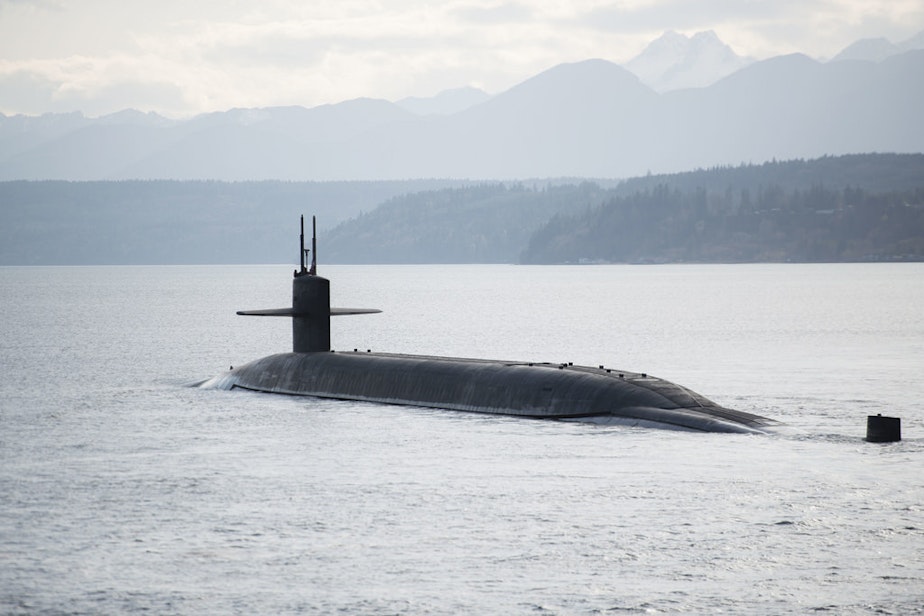'This moment is kind of a glow up for nuclear weapons' and Washington is playing a major role

With more than 1,100 warheads deployed on submarines based out of Naval Base Kitsap; Washington state has the third largest nuclear arsenal in the world, exceeded only by Russia and the rest of the United States.
How worried should we be?
Patrick Malone is an investigative reporter with The Seattle Times, and he joined Soundside to talk about the newest warhead in the Navy’s arsenal, the W76-2.
The W76-2 has a destructive force of between five and eight kilotons, or about half the power of the bombs dropped during WW2 on Hiroshima. This “low yield” weapon was designed and approved specifically to counter the smaller “tactical” nuclear weapons that Russia has in their arsenal.
RELATED: How concerned should you be about nuclear radiation from Ukraine?
This new warhead was created in record time, going from proposal and approval to construction and deployment in just 16 months, under then President Trump’s Nuclear Posture Review. Malone says, “Supporters of the W76-2 sold it to Congress as a rational ‘in kind’ response, one that is proportionate to perhaps a battlefield nuke that someone like Putin might be likely to use.”
As the conflict in Ukraine intensifies, concerns that Russia may stick to this doctrine of “escalate to de-escalate” by using a “low yield” weapon have the potential increase alongside it. This, theoretically, could then lead to full scale nuclear war. In a model produced at Princeton called “Plan A,” the use of low yield weapons would be likely to escalate to catastrophic levels within a week.
Sponsored
However, Hans Kristensen at the nonprofit Federation of American Scientists and Bellevue Congressman Adam Smith, who chairs the House Armed Services Committee, both agree that we’re not quite there yet.
“They both say that despite the ratcheting up of rhetoric around nuclear weapons during this Ukrainian conflict, they think that we're a great distance from crossing the nuclear threshold," Malone said.
The big concern? A new arms race.
“This moment is kind of a glow up for nuclear weapons, right?" Malone said. "It's saying, ‘just look at all you can accomplish if you have us.’”
Countries like Iran, North Korea, and Saudi Arabia are all ramping up production in order to be able to have a seat at the international table once they do have the leverage that nuclear weapons provide. This, in effect, resets the playing field, causing everyone to recalibrate their response strategy.
Sponsored
So for now, Washington state will remain a strategically important part of the U.S. nuclear plan with geographical advantages in both the Pacific theater and toward the North Pole.
Fortunately, nuclear tensions seem to have simmered down in recent days.
“This Sword of Damocles is always hanging there,” Malone said. “But the good news is, we have a long way to go before experts think we’re on the precipice of a nuclear war.”





